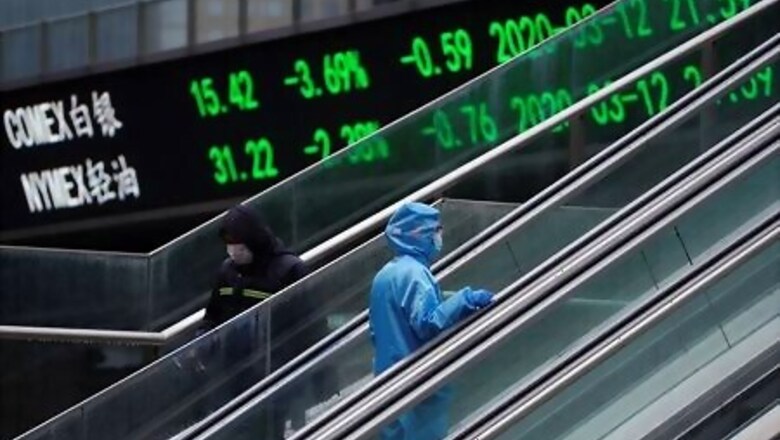
views
SINGAPORE/BOSTON Asia’s stock markets followed Wall Street higher on Thursday, as investors returned to tech stocks, gold and selling dollars after steady virus figures and a surprising jump in U.S. inflation boosted sentiment.
MSCI’s broadest index of Asia-Pacific shares outside Japan was up 0.2%, and gains in semiconductor makers drove Japan’s Nikkei 1.9% higher to a six-month peak.
The rises come after a tech rally left the S&P 500 within a whisker of a record closing high overnight, in a climate where even bad news is regarded as good news if it increases the chances of more stimulus to aid recovery.
“We’d seen value outperforming over the last few days, but that was unwound last night,” said Chris Weston, head of research at Melbourne brokerage Pepperstone, pointing to a drop in U.S real yields as inflation expectations rose.
“Maybe that was enough to get people back into the short dollar, long precious metals, long tech trade,” he said.
Rising fuel costs lifted U.S. consumer prices 0.6% last month, compared with expectations for 0.3%, leaving core inflation at 1.6% for the year to July.
At the same time, the number of daily new COVID-19 infections in the United States seems to be stabilising around 55,000. S&P 500 futures traded flat.
The bond market was steady after a huge auction and the generally upbeat mood drove selling overnight, with benchmark 10-year U.S. debt yielding 0.6622%.
A softer dollars helped gold rise steadily, adding 1% to $1,937 an ounce after whipsawing around $1,900 overnight.
Australia was the outlier in regional equity markets, with selling of communications giant Telstra after a profit plunge dragging on the index.
Markets are still eagerly awaiting a breakthrough in wrangling over the next U.S. stimulus package, despite little sign of progress in talks, and a crucial weekend meeting between U.S. and Chinese trade officials.
“Exuberance in U.S. equities begs the question of whether markets have succumbed to inflated optimism rather than reacting to inflation and some optimism,” said Vishnu Varathan of Mizuho in Singapore, warning the inflation bounce seemed fragile.
“The V-shaped market rebound appears removed from the lived realities of an arduous slog back for the real economy,” he said.
DOLLAR SLIPS
Besides gains on Wall Street the broader mood had investors turning the blowtorch back on the U.S. dollar.
It has steadied in August after a 4% slump in July against a basket of currencies, but was trading under pressure on Thursday as a cautious tone from Federal Reserve policymakers overnight reinforced expectations for low rates for a long time.
The dollar was last 0.2% weaker on the euro at $1.1806 while sterling crept off a one-week low hit in the wake of diabolical growth figures overnight.
The only saving grace from a record 20.4% crash in second-quarter growth in Britain, the most severe contraction reported by any major economy so far, was a surprisingly strong 8.7% rebound in June.
The Australian dollar briefly rose after data showed better-than-expected hiring last month, but as it was not enough to stave off a rise in unemployment to a two-decade high the currency settled to steady at $0.7168.
“The likelihood is that job gains will be much harder to generate in the coming months,” said ING economist Rob Carnell. “The economy is still operating far from business as usual.”
In commodities oil mostly clung on to solid gains made overnight when a drop in U.S. crude inventories spurred hopes that fuel demand is recovering.
Brent crude futures were last 0.3% softer at $45.28 a barrel, while U.S. crude dipped by the same margin to $42.54 a barrel.
Disclaimer: This post has been auto-published from an agency feed without any modifications to the text and has not been reviewed by an editor




















Comments
0 comment